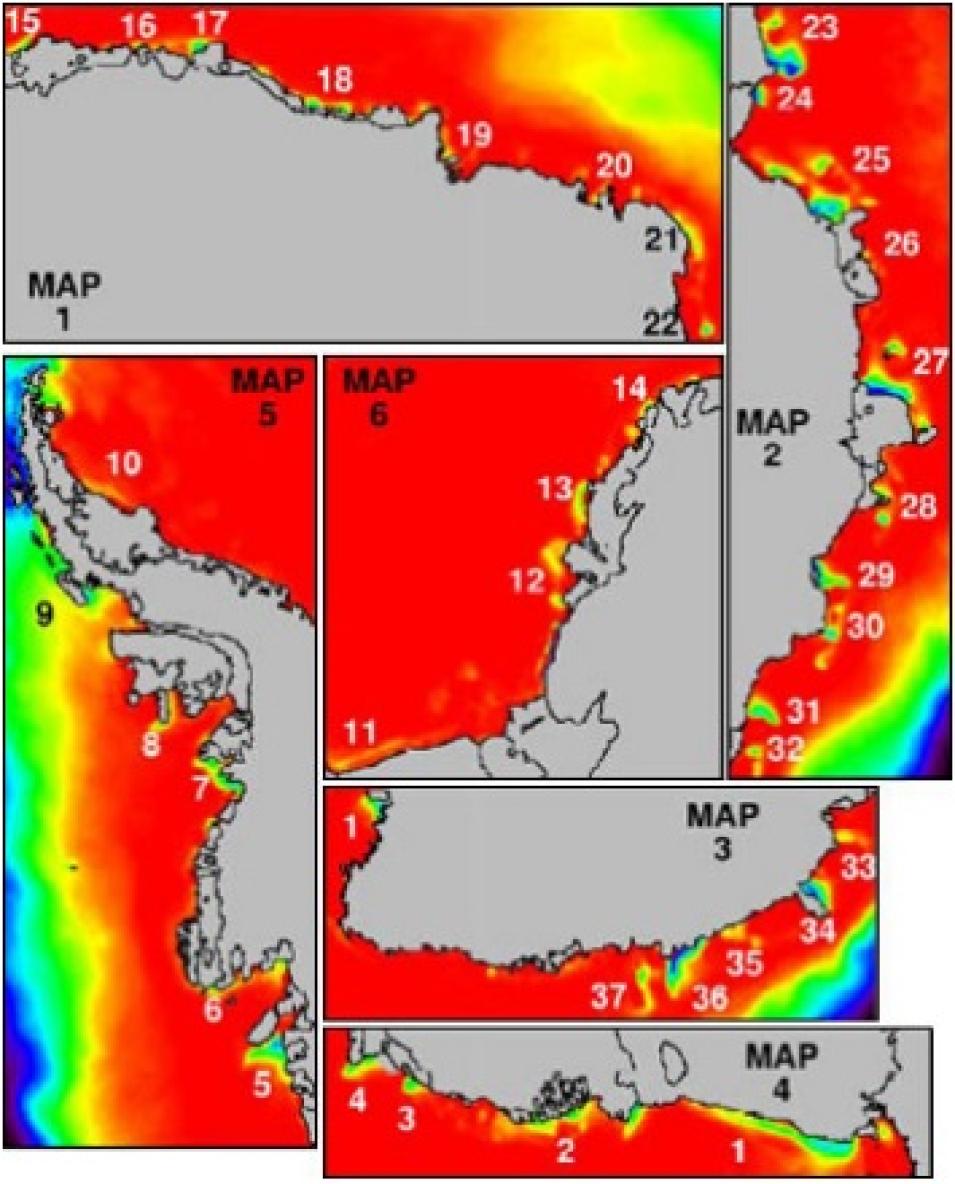Few studies have looked at the biology of these open water patches until recently. Aided by high-resolution satellite data, Kevin Arrigo conducted a comprehensive inventory of the polynyas surrounding the coast of Antarctica. The five-year study showed that during a typical year, many polynyas are not very productive, while others are teeming with life for just a few short months, providing a feeding ground for larger animals like the Adéile penguin.
“We didn’t have any information about how productive these polynyas were, so our motivation was to find out what fraction of the Southern Ocean production the polynyas are responsible for,” said Arrigo, biologist and assistant professor of geophysics at Stanford University. Arrigo also hoped to learn more about the relationship between polynya productivity and the overall food chain.
Polynyas support the growth and accumulation of plantlike organisms, called phytoplankton, which consist mostly of algae and bacteria and are the foundation of the marine food chain. Ocean surface waters where polynyas occur are the first areas in polar regions to be exposed to increasing springtime solar radiation, either because they lack ice cover or because their weak ice cover is more susceptible to early breakup. This exposure to the sun, in turn, promotes the livelihood of phytoplankton and other marine organisms.
Understanding the distribution of polynyas around Antarctica is one of the first steps toward identifying biological habitats in the region, according to Arrigo. “We knew there were quite a few polynyas, but no one has ever tried to quantify their productivity before,” he said.
To locate the Antarctic polynyas, Arrigo and a team of researchers analyzed data from the Special Sensor Microwave/Imager (SSM/I), a passive microwave sensor that measures the amount of radiation emitted by the Earth’s surface, known as brightness temperatures. Brightness temperatures are a gauge of emissivity, or the ability of water or ice to emit radiation at microwave frequencies. The data, archived at NASA's National Snow and Ice Data Center Distributed Active Archive Center (NSIDC DAAC), were collected from June 1997 to May 2002.



